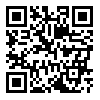
International Journal of Molecular and Cellular Medicine (IJMCM)
Babol University of Medical Sciences
Tue, Dec 23, 2025
[Archive]
Volume 3, Issue 1 (Int J Mol Cell Med 2014)
Int J Mol Cell Med 2014, 3(1): 57-60 |
Back to browse issues page
Download citation:
BibTeX | RIS | EndNote | Medlars | ProCite | Reference Manager | RefWorks
Send citation to:



BibTeX | RIS | EndNote | Medlars | ProCite | Reference Manager | RefWorks
Send citation to:
Assadi N, Zabihi E, Khosravifarsani M, Khafri S, Akhavan Niaki H, Amiri M et al . Radioadaptive Response in Human Lymphocyte Cells. Int J Mol Cell Med 2014; 3 (1) :57-60
URL: http://ijmcmed.org/article-1-107-en.html
URL: http://ijmcmed.org/article-1-107-en.html
Najmeh Assadi1 
 , Ebrahim Zabihi1
, Ebrahim Zabihi1 
 , Meysam Khosravifarsani1
, Meysam Khosravifarsani1 
 , Soraya Khafri2
, Soraya Khafri2 
 , Haleh Akhavan Niaki1
, Haleh Akhavan Niaki1 
 , Mehrangiz Amiri3
, Mehrangiz Amiri3 
 , Ali Shabestani Monfared4
, Ali Shabestani Monfared4 


 , Ebrahim Zabihi1
, Ebrahim Zabihi1 
 , Meysam Khosravifarsani1
, Meysam Khosravifarsani1 
 , Soraya Khafri2
, Soraya Khafri2 
 , Haleh Akhavan Niaki1
, Haleh Akhavan Niaki1 
 , Mehrangiz Amiri3
, Mehrangiz Amiri3 
 , Ali Shabestani Monfared4
, Ali Shabestani Monfared4 

1- Cellular and Molecular Biology Research Center (CMBRC), Babol University of Medical Sciences , Babol, Iran.
2- Social Medicine and Health Department, Babol University of Medical Sciences, Babol, Iran.
3- Department of Nuclear Medicine, Paramedical Faculty, Babol University of Medical Sciences, Babol, Iran.
4- Cellular and Molecular Biology Research Center (CMBRC), Babol University of Medical Sciences , Babol, Iran. ,monfared_ali@yahoo.com
2- Social Medicine and Health Department, Babol University of Medical Sciences, Babol, Iran.
3- Department of Nuclear Medicine, Paramedical Faculty, Babol University of Medical Sciences, Babol, Iran.
4- Cellular and Molecular Biology Research Center (CMBRC), Babol University of Medical Sciences , Babol, Iran. ,
Abstract: (14378 Views)
The adaptive response (AR) is a phenomenon by which cells exposure to sublethal doses of DNA-damaging agents (non-mutagenic dose of chemical or radiation), known as conditioning treatment (CT), leads to increased resistance to a subsequent exposure to a higher dose of the same or other agents, known as challenge treatment (CR). The adaptive response (AR) induced by radiation in human lymphocytes has been reported in a range of 1-20cGy pre-exposure. In this study, we investigated the adaptive response using 5cGy conditioning dose of gamma rays followed by 2 Gy challenging dose in peripheral human lymphocyte cells. Blood samples were taken from 30 female volunteers and this experiment was carried out by delivering 5 cGy gamma radiation followed by 2 Gy of challenging. Consequently, the number of micronuclei (MN) in binuclear lymphocyte cells was counted as an endpoint. The results showed that the mean frequency of micronuclei in binuclear lymphocytes which have received both conditioning and challenge doses are significantly reduced in comparison to those only exposed to 2 Gy (20.46±2.13, 30.2±3.29) (P< 0.01). The results showed the existence of an in vitro adaptive response in lymphocyte cell exposed to low dose of gamma radiations.
Keywords: Adaptive Response (AR), challenge treatment (CR), condition treatment (CT), micronuclei assay
Subject:
Genetics & Disease
Received: 2013/09/22 | Accepted: 2013/11/10 | Published: 2013/11/26
Received: 2013/09/22 | Accepted: 2013/11/10 | Published: 2013/11/26
Send email to the article author
| Rights and permissions | |
 |
This work is licensed under a Creative Commons Attribution-NonCommercial 4.0 International License. |


